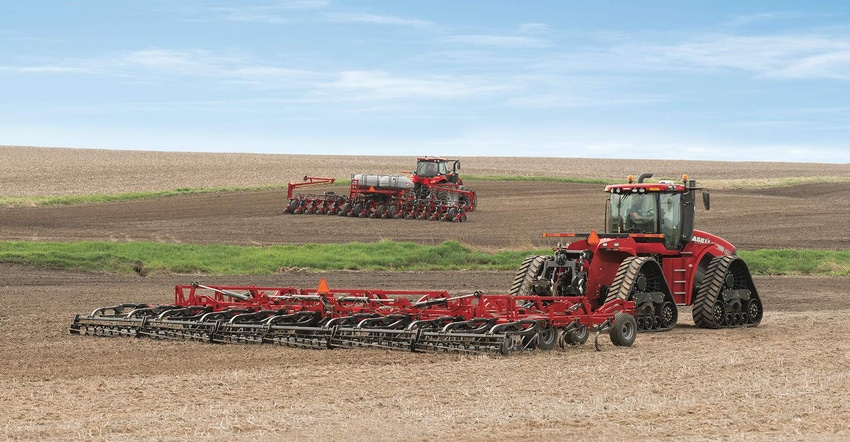November 30, 2017

Sponsored Content
Now is the time to consider how even the smallest changes can help equipment perform better and help do a better job raising crops. As you prepare for next year, dig deeper and challenge traditional assumptions — starting with the environment each seed is placed in.
Here are five ways to rethink your seedbed and take control of your farm’s potential in 2017.
Look below the surface to create a high-efficiency seedbed.
Certainly, the seedbed surface is critical. But you need to dig deeper �— to the subsurface floor — and pay attention to everything in between. The subsurface floor determines how your planter’s row units ride (or bounce) across the field — not to mention how well they can cut residue. It should be firm and even more smooth and level than the soil surface to ensure proper seed placement.Practice proactive tillage versus reactive planting.
Cutting-edge planters are very good at reacting to poor seedbed conditions, but what if they didn’t have to? Instead of assuming you’ll “fix” the seedbed come spring, focus your efforts throughout the year — starting with residue management out the back of your combine. From there, find the right disk ripper, vertical tillage tool or disk harrow to help you size residue, mix and bury it in the fall or leave a protective surface layer that sets your fields up for success in the spring.Find ways to boost planting efficiency — beyond acres per hour.
High-efficiency planting is measured at the end of the season, not at the end of the day. As you evaluate your planter’s performance, think about potential upgrades that will help make the most of ideal conditions, such as in-cab adjustments, row-closing down pressure or hydraulic downforce. For example, consider how an upgrade to your precision farming technology could put more row-unit adjustments at your fingertips. In-cab fine-tuning can help you quickly tweak settings from field to field or as conditions change across an individual field — without the toll that jumping in and out of the cab all day takes on you.Focus on achieving fast, uniform emergence.
Plant spacing is important, and a picket-fence stand looks great from the highway. But quick, uniform emergence is a better measure of planting success. In fact, university Extension research from across the Midwest shows fields that get off to a fast, uniform start yield more. 1 In its analysis, Iowa State University specialists found that when factors, including inconsistent seeding depth and poor crop residue distribution, slowed germination and emergence for 17% of corn plants, yields dropped by 4 percent to 8 percent. That’s 8 to 16 bushels per acre on 200-bushel corn.Just because you have a high-speed planter doesn’t mean you should plant as fast as you can.
The seedbed, not your planter’s capabilities, sets the speed limit. Know your field conditions and adjust your tillage practices accordingly to create a smooth, level finish. In addition to running your spring tillage pass in the same direction as your planter, consider a mounted or pull-type Advanced Conditioning System to improve clod sizing.
It’s also important to make sure your field cultivator is matched to your planter’s potential productivity levels. Here’s one scenario: A 60-foot Tiger-Mate® 255 field cultivator matched with a 24-row 2150 Early Riser® planter (with in-furrow fertilizer) can cover up to an acre per minute. Just like grain carts need to keep up with combines in the fall, so does the final tillage pass ahead of planting.
Visit caseih.com/seedbed to learn more about small changes that can drive efficiencies on your operation.
Resources:
1Yield effect of uneven corn heights. Iowa State University Agronomy Extension website. Accessed Nov. 21, 2016.
You May Also Like




